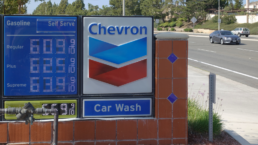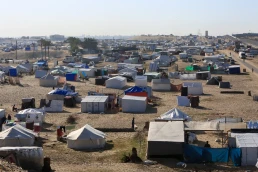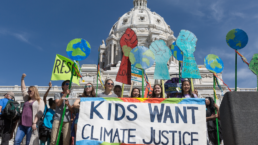A “foreign policy for the middle class” and centering human rights collide in the Middle East.
By Jonathan Guyer, Vox
As the average national gas price topped $5 a gallon, the White House formally announced that President Joe Biden, in a significant policy turnaround, would be traveling to Saudi Arabia.
On the campaign trail, Biden had called the oil-rich kingdom a “pariah” in response to US intelligence groups’ conclusion that Crown Prince Mohammed bin Salman bin Abdulaziz ordered the killing of Washington Post columnist Jamal Khashoggi. Though the US relationship with Saudi Arabia teetered along in the background, Biden had resisted directly meeting MBS. But July 13-16, he’ll travel to the Middle East. He’ll visit the Saudi city of Jeddah and meet about 10 Arab heads of state and travel to Israel and the occupied Palestinian territory.

Biden’s decision to go to Saudi Arabia in July as part of his first Middle East trip as president reveals the tensions at the heart of his foreign policy.
So far, there have been two foreign policy bumper stickers of his administration. The first: putting human rights at the center of foreign policy. As the US has put its diplomatic power into supporting Ukraine, Biden and his team lately have framed the issue more as supporting democracies versus autocracies.
The second bumper sticker is a foreign policy for the middle class, which feels like the international counterpart to Build Back Better. The idea, which Biden had put forth when campaigning, is that foreign policy is too often divorced from the daily lives of Americans in the heartland, and that what the US does abroad should work for them.
Recent Posts
Stop Israel’s Dystopian “Humanitarian City” Plan—Before It’s Too Late
July 11, 2025
Take Action Now For the past 20 months, the world has watched—and largely enabled—a genocidal campaign in Gaza. Over 55,000 Palestinians have been…
The “Liberal” International Order Is Criminalizing Palestine Protests
July 11, 2025
Take Action Now As Western governments repress Palestine solidarity and enable Israel’s impunity, the “liberal international order” is no longer…
Politicians Are Betraying Gen Z On Climate
July 10, 2025
Take Action Now While Gen-Zers thrift, knit, crochet, and find other ways to reduce our footprints, Trump and the GOP are greenlighting more climate…
Trump’s Deportation Threat Against Zohran Mamdani Is Shameful
July 10, 2025
Take Action Now In only half a year of Donald Trump’s presidency, he and his allies have turned deportation into an explicitly political threat…




